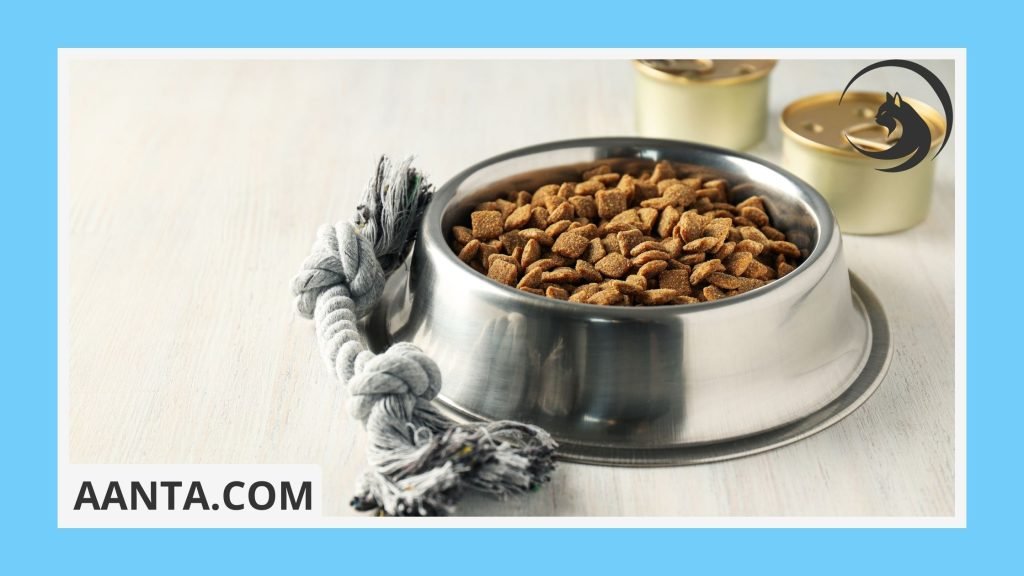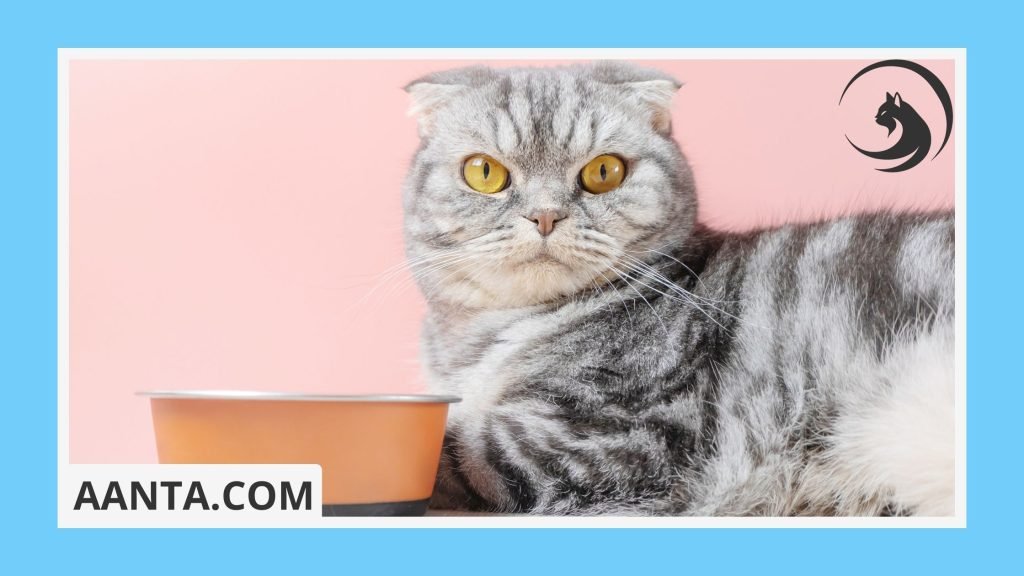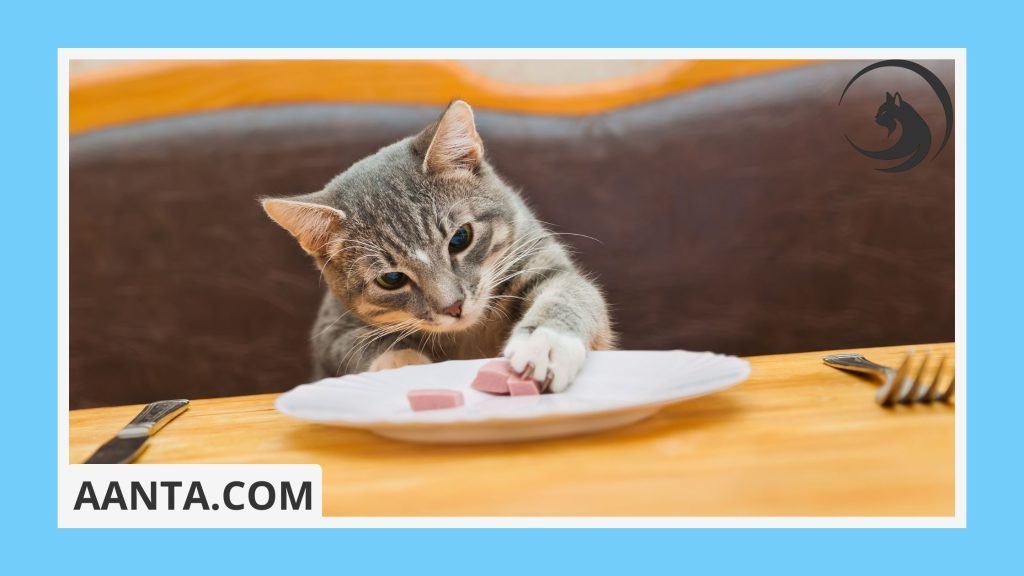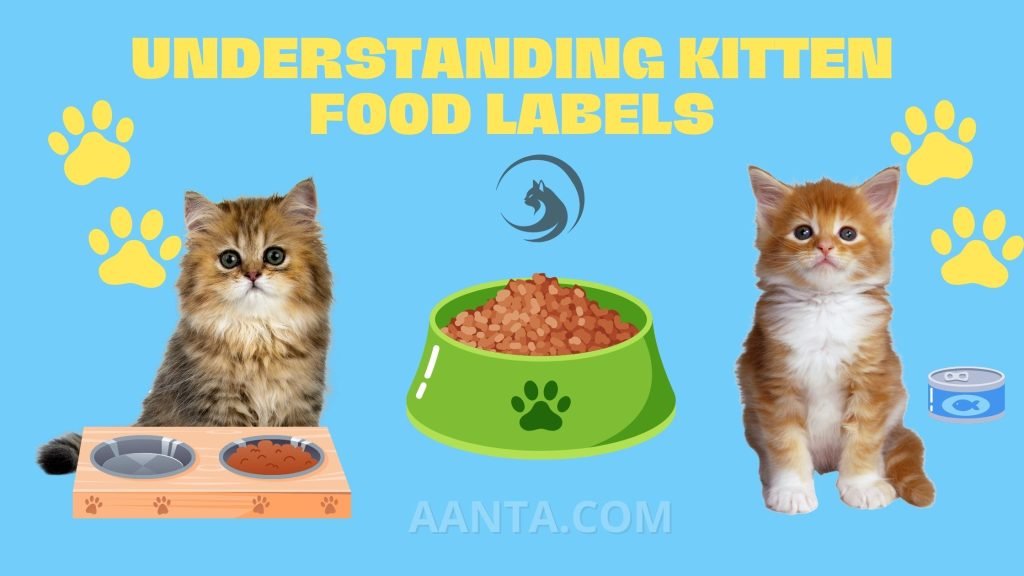Welcoming a kitten into your home is an exciting time filled with cuddles, playtime, and, of course, ensuring they have the best care possible. Central to their well-being is their nutrition, and navigating the world of kitten food labels is a crucial step in providing them with the nourishment they need. Understanding what goes into these labels can seem like deciphering a code, but with a bit of knowledge, you’ll be equipped to make informed decisions about what’s best for your furry friend. Let’s embark on this journey together, unraveling the mysteries of kitten food labels to ensure your kitten thrives from bowl to whisker.
Understanding the Guaranteed Analysis

The guaranteed analysis section on kitten food labels provides vital information about the nutrient content of the food. It’s like a nutritional snapshot, offering insights into what your kitten will be consuming. Here’s a breakdown of what to look for:
1. Protein:
- Kittens require higher levels of protein to support their growth and development. Look for foods with animal-based protein sources like chicken, turkey, or fish.
- Aim for a minimum protein content of around 30-40% on a dry matter basis to ensure your kitten receives adequate amino acids.
2. Fat:
- Fat is a concentrated source of energy and essential fatty acids necessary for healthy skin, coat, and brain development.
- Opt for foods with moderate fat levels, typically around 20-30% on a dry matter basis, to provide the necessary nutrients without excess calories.
3. Fiber:
- Fiber aids in digestion and helps regulate bowel movements in kittens.
- Look for foods with moderate fiber content, typically around 2-5%, to support gastrointestinal health without causing digestive upset.
4. Moisture:
- Kittens have higher moisture requirements than adult cats due to their smaller size and higher activity levels.
- Wet kitten foods typically have higher moisture content (around 75-85%) compared to dry foods (around 5-10%). Consider incorporating both wet and dry foods into your kitten’s diet to ensure adequate hydration.
It’s important to note that the guaranteed analysis provides minimum and maximum values for each nutrient, so actual nutrient content may vary slightly from batch to batch. Additionally, consult your veterinarian for personalized recommendations based on your kitten’s age, weight, and health status. By understanding the guaranteed analysis, you can make informed choices to meet your kitten’s nutritional needs and support their overall health and well-being.
Deciphering the Ingredients List

The ingredients list on kitten food labels serves as a window into what goes into your furry friend’s meal. It’s akin to reading a recipe for your favorite dish – the better the ingredients, the better the outcome. Let’s break down what to look for and what to avoid when perusing this crucial section.
Firstly, aim for transparency. Whole, recognizable ingredients like chicken, turkey, or salmon should be at the forefront. These protein sources provide essential amino acids necessary for your kitten’s growth and development. Avoid foods that list ambiguous terms like “meat by-products” or “animal digest,” as these can encompass a range of less desirable parts of animals.
Next, consider the carbohydrate sources. While cats are obligate carnivores, meaning they primarily require meat in their diet, some carbohydrates can be beneficial in moderation. Look for complex carbohydrates like brown rice or sweet potatoes, which offer fiber and energy without causing spikes in blood sugar levels.
Lastly, scrutinize the preservatives and artificial additives. While some preservatives are necessary to maintain freshness, excessive use of artificial colors, flavors, and preservatives should raise red flags. Look for natural preservatives like tocopherols (vitamin E) or ascorbic acid (vitamin C) instead.
Decoding the AAFCO Statement

The AAFCO (Association of American Feed Control Officials) statement on kitten food labels is a critical piece of information for pet owners. This statement ensures that the food meets the nutritional standards set by AAFCO for either growth or all life stages.
When you see an AAFCO statement on a kitten food label, it means that the food has undergone testing to ensure it provides the necessary nutrients for your kitten’s specific life stage. For kittens, this typically means the food is formulated to support growth and development.
It’s important to note that there are different AAFCO standards for different life stages, including growth, maintenance, and all life stages. For kittens, you’ll want to look for a statement indicating that the food meets the requirements for growth. This ensures that your kitten is getting the essential nutrients they need to thrive during this crucial stage of development.
By choosing kitten food with an AAFCO statement, you can have confidence that you’re providing your furry friend with a nutritionally balanced diet that supports their growth and overall health. Always check the label to ensure it meets AAFCO standards for your kitten’s specific life stage, and consult with your veterinarian if you have any questions or concerns about your kitten’s diet.
Feeding Trials:
- Some foods undergo feeding trials to demonstrate their nutritional adequacy under controlled conditions.
- Look for statements such as “feeding tests substantiate that this food provides complete and balanced nutrition” to indicate that the food has been tested on animals to confirm its nutritional adequacy.
- Feeding trials provide additional assurance that the food is not only formulated to meet nutrient requirements but also well-accepted by kittens when fed as the sole source of nutrition.
Understanding these aspects of the AAFCO statement empowers you to make informed decisions about the suitability of kitten food for your furry companion’s specific needs. Always consult with your veterinarian for personalized guidance regarding your kitten’s diet and nutrition.
Following Feeding Instructions

Importance of Feeding Guidelines:
- Feeding instructions on kitten food labels are tailored to provide the appropriate amount of nutrition for your cat’s age and weight.
- Following these guidelines closely is crucial to prevent overfeeding or underfeeding, which can lead to health issues such as obesity or malnutrition.
- Keep in mind that kittens have different nutritional requirements than adult cats, so it’s essential to choose a food specifically formulated for kittens and follow the feeding instructions accordingly.
Determining Portion Sizes:
- Feeding instructions typically provide recommendations based on your kitten’s weight and age.
- Start by determining your kitten’s current weight and age, and then refer to the feeding chart on the food label to determine the recommended portion sizes.
- Monitor your kitten’s weight regularly and adjust portion sizes as needed to ensure they are maintaining a healthy growth rate.
Frequency of Feedings:
- Kittens have smaller stomachs and higher energy needs than adult cats, so they require more frequent feedings throughout the day.
- Follow the recommended feeding frequency outlined on the food label, which may suggest feeding your kitten multiple small meals per day.
- As your kitten grows older, you can gradually reduce the frequency of feedings and transition to a more structured feeding schedule.
Transitioning to Solid Food:
- If you’re transitioning your kitten from nursing to solid food, follow the gradual introduction method recommended by veterinarians.
- Start by mixing a small amount of wet or dry kitten food with your kitten’s formula or mother’s milk replacer.
- Gradually increase the proportion of kitten food while decreasing the amount of formula over several days until your kitten is fully weaned onto solid food.
By following the feeding instructions provided on kitten food labels, you can ensure that your furry friend receives the proper nutrition they need to thrive. If you have any concerns or questions about feeding your kitten, don’t hesitate to consult with your veterinarian for personalized guidance and support.
Special Dietary Needs

Just like humans, kittens can have specific dietary needs or sensitivities that require special attention when selecting their food. If your kitten has allergies or sensitivities to certain ingredients, it’s crucial to choose a diet that accommodates these needs. Here are some considerations and options to keep in mind:
- Limited Ingredient Formulas: Look for kitten foods labeled as “limited ingredient” or “single protein source.” These formulations typically avoid common allergens like grains, poultry, or certain proteins, making them suitable for kittens with food sensitivities.
- Grain-Free Options: Some kittens may benefit from grain-free diets, especially if they have sensitive stomachs or food intolerances. Grain-free formulas use alternative carbohydrate sources like peas, potatoes, or tapioca, which may be easier for some kittens to digest.
- Hydrolyzed Protein Diets: Hydrolyzed protein diets are specially processed to break down proteins into smaller, less allergenic fragments. These diets are often recommended for kittens with severe food allergies or intolerances, as they can help minimize allergic reactions.
- Novel Protein Sources: If your kitten has specific protein allergies, consider trying foods with novel protein sources such as duck, venison, or rabbit. These alternative proteins are less likely to trigger allergic reactions in kittens with sensitivities to common proteins like chicken or beef.
- Specialized Formulas for Health Conditions: Some kittens may require diets formulated for specific health conditions, such as urinary tract health or weight management. These specialized formulas often contain ingredients or supplements targeted at supporting your kitten’s unique requirements.
Before making any dietary changes for your kitten, it’s essential to consult with your veterinarian. They can provide valuable insights into your kitten’s specific needs and recommend the most appropriate diet. Your vet may even suggest conducting allergy tests or dietary trials to pinpoint any potential triggers.
By working closely with your veterinarian and carefully reading kitten food labels, you can provide your furry friend with a diet that supports their overall health and well-being.
Nutritional Additives

In addition to understanding the primary nutrients in kitten food, it’s worth delving into the realm of nutritional additives. These extra components can offer specific health benefits to your growing feline friend. Here’s a closer look at some common additives found in kitten food labels:
- Omega-3 Fatty Acids: Essential for brain development and maintaining healthy skin and coat, omega-3 fatty acids are crucial for kittens. Look for kitten foods fortified with sources like fish oil to support cognitive function and keep your kitten’s fur shiny and healthy.
- Taurine: This amino acid is vital for maintaining healthy heart function, vision, and reproductive health in kittens. Since cats can’t produce taurine on their own, it’s important to ensure their diet includes this nutrient. Look for kitten foods supplemented with taurine to support your kitten’s overall well-being.
- Probiotics: These beneficial bacteria support a healthy digestive system by promoting proper digestion and nutrient absorption. Kitten foods with added probiotics can help maintain a balanced gut flora, reducing the risk of digestive upset and supporting overall health.
- Antioxidants: Vitamins C and E are powerful antioxidants that help neutralize harmful free radicals in the body, reducing the risk of cellular damage and supporting the immune system. Look for kitten foods enriched with antioxidants to help strengthen your kitten’s natural defenses.
When selecting kitten food with nutritional additives, it’s important to consider the quality and source of these supplements. Natural sources are often more readily absorbed and utilized by your kitten’s body.
As always, consult with your veterinarian before introducing any new supplements or dietary changes to your kitten’s diet. They can provide personalized recommendations based on your kitten’s individual needs and help ensure they receive optimal nutrition for growth and development.
CONCLUSION
Understanding kitten food labels is essential for providing your furry friend with the best possible nutrition. By deciphering ingredients, analyzing nutrient content, and considering special dietary needs and nutritional additives, you can make informed decisions about your kitten’s diet.
Choosing high-quality kitten food with wholesome ingredients and balanced nutrition sets the foundation for your kitten’s growth, development, and overall health. Remember to consult with your veterinarian for personalized recommendations and guidance tailored to your kitten’s specific needs.
Ultimately, by prioritizing your kitten’s nutritional well-being and investing time in understanding and selecting the right food, you can ensure they lead a happy, healthy life filled with purrs and playful antics. Your dedication to providing optimal nutrition will be rewarded with a thriving and contented companion for years to come.
FAQs
1. What is the significance of the guaranteed analysis on kitten food labels?
- The guaranteed analysis provides essential information about the nutrient content of the food, including protein, fat, fiber, and moisture levels. It helps ensure that your kitten receives the necessary nutrients for growth and development.
2. What should I look for in terms of protein content on kitten food labels?
- Aim for foods with animal-based protein sources like chicken, turkey, or fish, with a minimum protein content of around 30-40% on a dry matter basis to support your kitten’s growth and development.
3. Why is fat important in kitten food, and what levels should I look for?
- Fat is crucial for providing energy and essential fatty acids necessary for healthy skin, coat, and brain development. Opt for foods with moderate fat levels, typically around 20-30% on a dry matter basis.
4. Why is moisture content important in kitten food, and how does it vary between wet and dry foods?
- Kittens have higher moisture requirements than adult cats, so it’s essential to ensure adequate hydration.
5. What does the AAFCO statement on kitten food labels indicate?
- The AAFCO statement ensures that the food meets the nutritional standards set by AAFCO for either growth or all life stages. It indicates that the food has undergone testing to confirm its nutritional adequacy for kittens.
6. How do feeding trials contribute to the reliability of kitten food?
- Foods that undergo feeding trials provide additional assurance of nutritional adequacy and acceptance by kittens when fed as the sole source of nutrition. Look for statements indicating that feeding tests substantiate the food’s complete and balanced nutrition.
7. Why is it important to follow feeding instructions on kitten food labels?
- Following feeding instructions closely is crucial to prevent overfeeding or underfeeding, which can lead to health issues such as obesity or malnutrition. Feeding guidelines are tailored to provide the appropriate amount of nutrition for your kitten’s age and weight.
8. How can I determine the portion sizes and feeding frequency for my kitten?
- Feeding instructions typically provide recommendations based on your kitten’s weight and age. Monitor your kitten’s weight regularly and adjust portion sizes as needed to ensure they are maintaining a healthy growth rate. Kittens may require more frequent feedings throughout the day due to their smaller stomachs and higher energy needs.
9. What should I consider if my kitten has special dietary needs or sensitivities?
- If your kitten has allergies or sensitivities, consider limited ingredient formulas, grain-free options, hydrolyzed protein diets, or specialized formulas for specific health conditions. Consult with your veterinarian for personalized recommendations and guidance.
These FAQs provide insights into the essential aspects of welcoming a kitten into your home and understanding kitten food labels. For further guidance tailored to your kitten’s specific needs, consult with your veterinarian.







